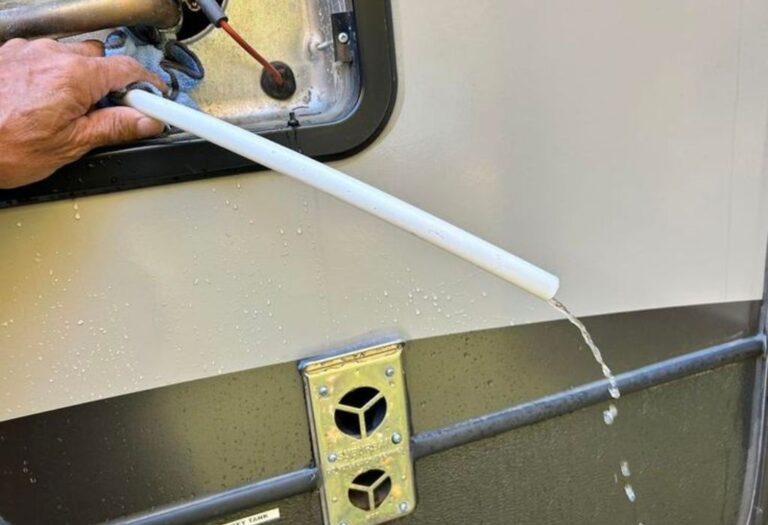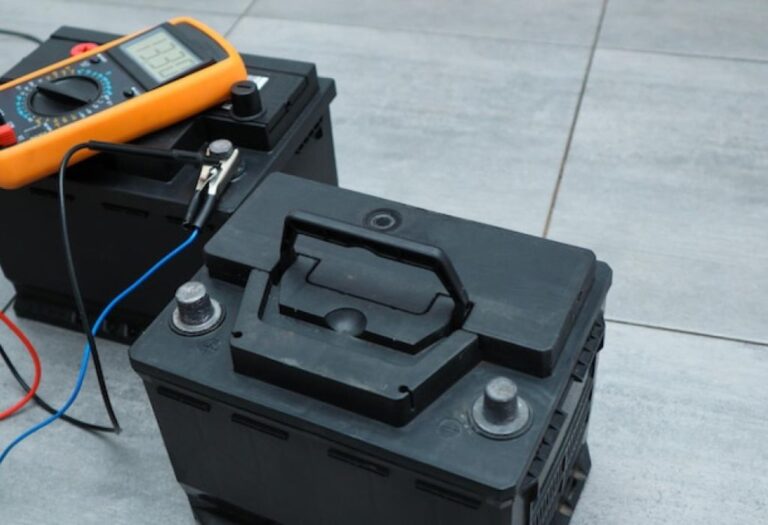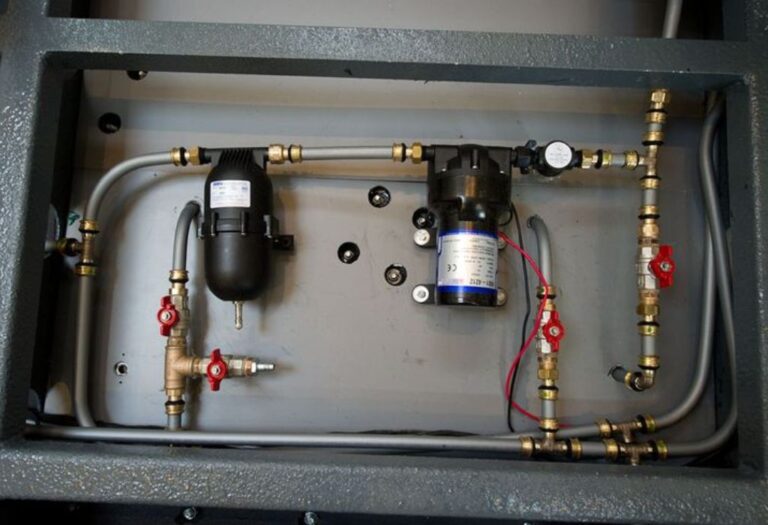How to Tell If Your RV Water Pump Is Bad
Imagine waking up in your RV, ready to make coffee, but when you turn on the faucet—nothing happens.
No water pressure, just a faint hum from the pump below. For many RV owners, this moment marks the beginning of a frustrating day on the road.
Knowing how to tell if your RV water pump is bad can save you from unexpected breakdowns and costly repairs during your adventures.
The water pump is the heart of your RV’s plumbing system. It draws water from your freshwater tank and delivers it under pressure to every faucet, shower, and toilet.
When it starts to fail, the entire water supply can become unreliable. According to RV Travel Magazine, nearly 40% of water system malfunctions in motorhomes originate from pump or pressure issues — often due to neglect, freezing, or wear and tear.
Early detection makes all the difference. Weak water pressure, strange noises, or a constantly cycling pump may seem minor, but they’re often the first warning signs of internal damage. Ignoring them could lead to leaks, electrical short circuits, or complete pump failure when you need water the most.
In this guide, you’ll learn exactly how to tell if your RV water pump is bad, what symptoms to watch for, and how to diagnose each issue before it gets worse.
From simple electrical checks to pressure tests and replacement tips, this comprehensive breakdown will help you restore your RV’s water flow quickly—and keep it reliable for every future trip.
2. What Is an RV Water Pump and Why It Fails

An RV water pump is designed to maintain water pressure across your plumbing system, even when you’re not connected to an external water hookup. Most RVs use a 12V DC diaphragm pump, which automatically turns on when pressure drops in the lines and shuts off once the system stabilizes.
Over time, several factors can lead to failure. The diaphragm can wear down, seals can crack, or debris can clog the inlet filter. Electrical faults such as blown fuses, loose wires, or faulty switches are also common. If your RV has been stored in freezing temperatures without proper winterization, the pump housing may even crack from ice expansion.
What does the RV water pump do?
It pulls water from the freshwater tank and maintains consistent pressure through the plumbing system.
What’s the most common type of RV water pump?
A 12-volt diaphragm pump that activates automatically when pressure drops.
Can freezing damage the water pump?
Yes, ice can crack the pump housing or rupture seals, leading to leaks and pressure loss.
What electrical problems cause failure?
Blown fuses, corroded terminals, or a faulty power switch can prevent the pump from running.
How long do RV water pumps last?
Typically between 4–6 years, depending on usage and maintenance.
3. Key Symptoms: Signs That Your RV Water Pump Is Bad
Your water pump rarely fails without warning. Small irregularities in water flow, sound, or cycling behavior often appear first. Recognizing these symptoms early helps prevent total failure on the road.
The most common signs include weak water flow, loud or unusual noises, continuous cycling, or complete loss of water delivery even when the pump runs. If you notice these issues, it’s time to diagnose.
Why is my water pressure weak or inconsistent?
A worn diaphragm, air leaks, or a clogged filter can prevent the pump from maintaining full pressure.
What does it mean when the pump runs but no water comes out?
The inlet line could be blocked, the pump may have lost prime, or the internal valves might be damaged.
Why does the pump keep cycling on and off?
This indicates a leak or pressure loss in the plumbing system or a faulty pressure switch.
What if the pump is making loud noises?
Grinding or whining often points to air in the system, loose fittings, or internal wear.
Is a small drip near the pump serious?
Yes, even minor leaks cause pressure fluctuations that force the pump to run more often, shortening its lifespan.
4. Diagnosing the Problem: Step-by-Step Troubleshooting
A systematic check helps you confirm whether your pump is truly bad or if something else is to blame. Follow these steps in order to identify the issue accurately.
Step 1: Check Electrical Power
Use a multimeter to ensure your pump receives 12V DC power. Inspect the fuse, wiring, and switch. If power is missing, the pump won’t run regardless of condition.
Step 2: Verify Water Supply
Make sure there’s enough water in the freshwater tank and that the valves are open. Sometimes a “bad pump” is just an empty tank.
Step 3: Inspect the Inlet Filter and Lines
A clogged inlet filter or kinked hose can restrict flow, causing weak pressure or pump strain. Clean or replace filters regularly.
Step 4: Check for Air Leaks
Loose fittings allow air into the suction line, preventing the pump from priming correctly. Tighten all hose clamps and fittings.
Step 5: Examine the Diaphragm and Valves
If the pump runs continuously or produces no pressure, the internal diaphragm or check valves may be worn or cracked.
Step 6: Test the Pressure Switch
If the pump won’t shut off, the pressure switch could be stuck or faulty. Replace it if it fails continuity testing.
How do I know if the pump lost its prime?
You’ll hear it run loudly but no water flows. Refill the line or manually prime the pump.
Can I run the pump dry during testing?
No, running dry damages the diaphragm and shortens the pump’s life.
How can I check for leaks?
Turn off the pump and observe if pressure drops or the pump cycles back on. Leaks are often visible around fittings.
What if everything checks out but pressure is still low?
The motor may be losing torque—replacement is the best option.
5. Repair, Replacement, and Prevention Tips
Once you’ve identified the issue, the next step is deciding whether to repair or replace the pump. Minor electrical problems and clogged filters are easy fixes, but major internal wear often requires full replacement.
Repair Options
- Replace worn diaphragms using a rebuild kit.
- Fix corroded wiring or damaged switches.
- Clean inlet strainers and flush lines.
Replacement Tips
If your pump is older than five years or shows physical damage, replacement is recommended. Choose a new model with the same GPM (gallons per minute) and pressure rating as your current setup.
Prevention Strategies
- Winterize the water system before cold storage.
- Regularly clean filters and check fittings.
- Avoid running the pump when the tank is empty.
- Test pressure every few months for consistency.
Can I rebuild my RV water pump?
Yes, many diaphragm pumps offer rebuild kits that replace worn seals and internal valves.
When should I replace instead of repair?
Replace when the motor burns out, housing cracks, or repairs exceed 50% of the pump cost.
How can I prevent future failures?
Winterize before freezing temps, flush system seasonally, and keep electrical contacts clean.
Should I keep a spare pump while traveling?
Yes, many RVers carry a backup for emergencies during long trips.
6. Real-World Examples and Case Studies

Case 1: The “Midnight Drip” Incident
A traveler noticed their pump cycling every 10 minutes at night. Inspection revealed a loose fitting under the kitchen sink causing a slow leak. Once tightened, cycling stopped immediately—proving the pump wasn’t bad after all.
Case 2: The Frozen Failure
After a cold snap, an RVer found their pump running but no water flow. The cause? A cracked plastic pump head from freezing. The repair involved full pump replacement and proper winterization to prevent future damage.
Case 3: The Electrical Ghost
A pump appeared dead, but voltage testing showed a blown fuse due to corrosion. Cleaning terminals and replacing the fuse brought the system back to life within minutes.
What’s the most common cause of RV pump failure?
Wear on the diaphragm and valves from extended use or running dry.
Can low battery voltage affect pump performance?
Absolutely. Low voltage reduces motor speed and weakens water pressure.
What did these case studies teach?
Always diagnose before replacing. Many “bad pumps” turn out to be minor wiring or leak issues.
7. Additional FAQs
How can I tell if my RV water pump fuse is blown?
Check the fuse box—if the metal strip inside the fuse is broken or blackened, replace it.
Why does my pump keep running when faucets are closed?
There’s likely a leak in the plumbing or a faulty pressure switch.
Should I hear the pump running all the time?
No, it should only run when pressure drops or when water is being used.
Can a clogged filter make the pump noisy?
Yes, restricted water flow increases strain and causes whining noises.
Is city water safer to use than relying on the pump?
City water is stable, but the pump offers independence when dry camping—just ensure proper maintenance.
8. Conclusion
Knowing how to tell if your RV water pump is bad gives you control over one of the most critical parts of your RV’s comfort system. Whether it’s weak water pressure, continuous cycling, or unusual noises, understanding these warning signs helps you respond before a small issue turns into a costly replacement.
Check your electrical connections, keep filters clean, and never ignore subtle performance changes. With proper maintenance, an RV water pump can last years beyond its average lifespan—keeping your travels smooth, your showers strong, and your coffee mornings uninterrupted.
So the next time your faucet sputters or your pump hums unexpectedly, you’ll know exactly what to look for, how to fix it, and when it’s time to replace it.
I’m David R. Coleman, the founder, lead writer, and lifelong tool enthusiast behind GarageToolPro.com. With years of experience in automotive repair, woodworking, and home DIY projects, I created this platform to share practical tips, detailed tool reviews, and step-by-step guides that help mechanics, hobbyists, and homeowners get the job done right the first time.






